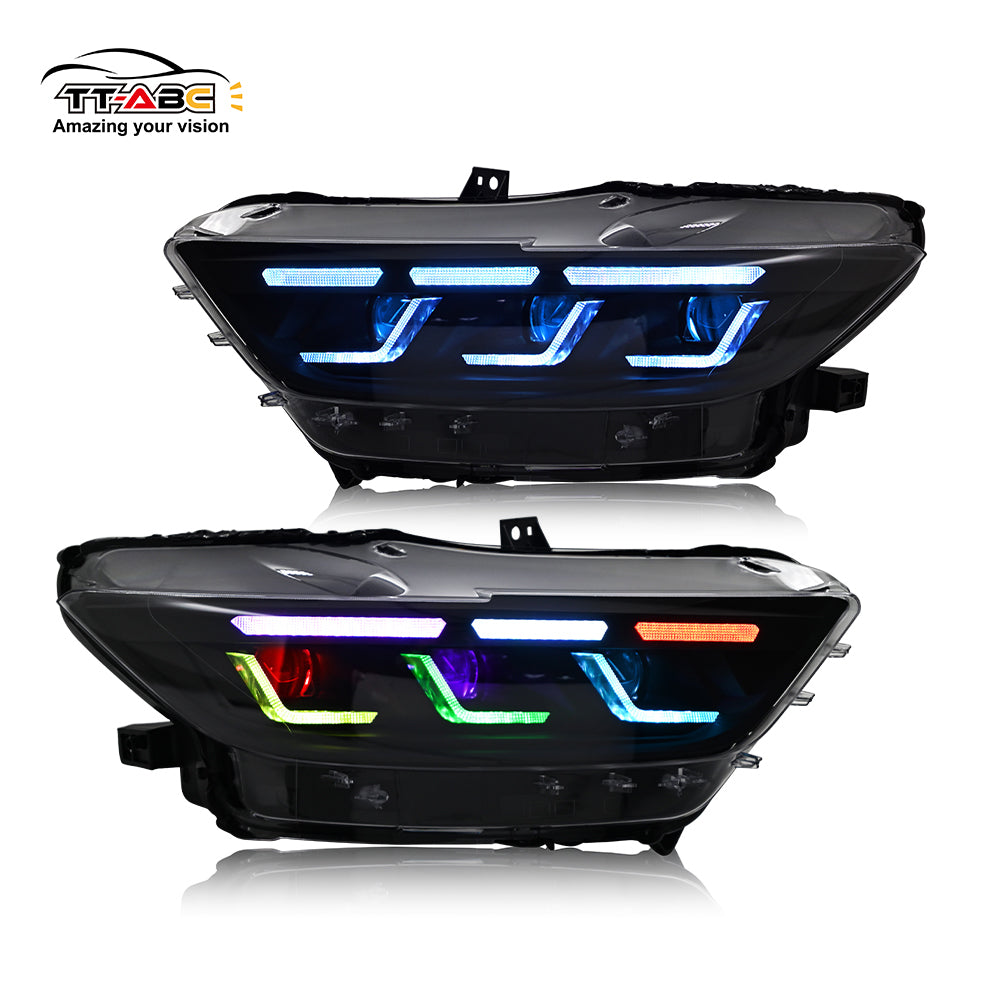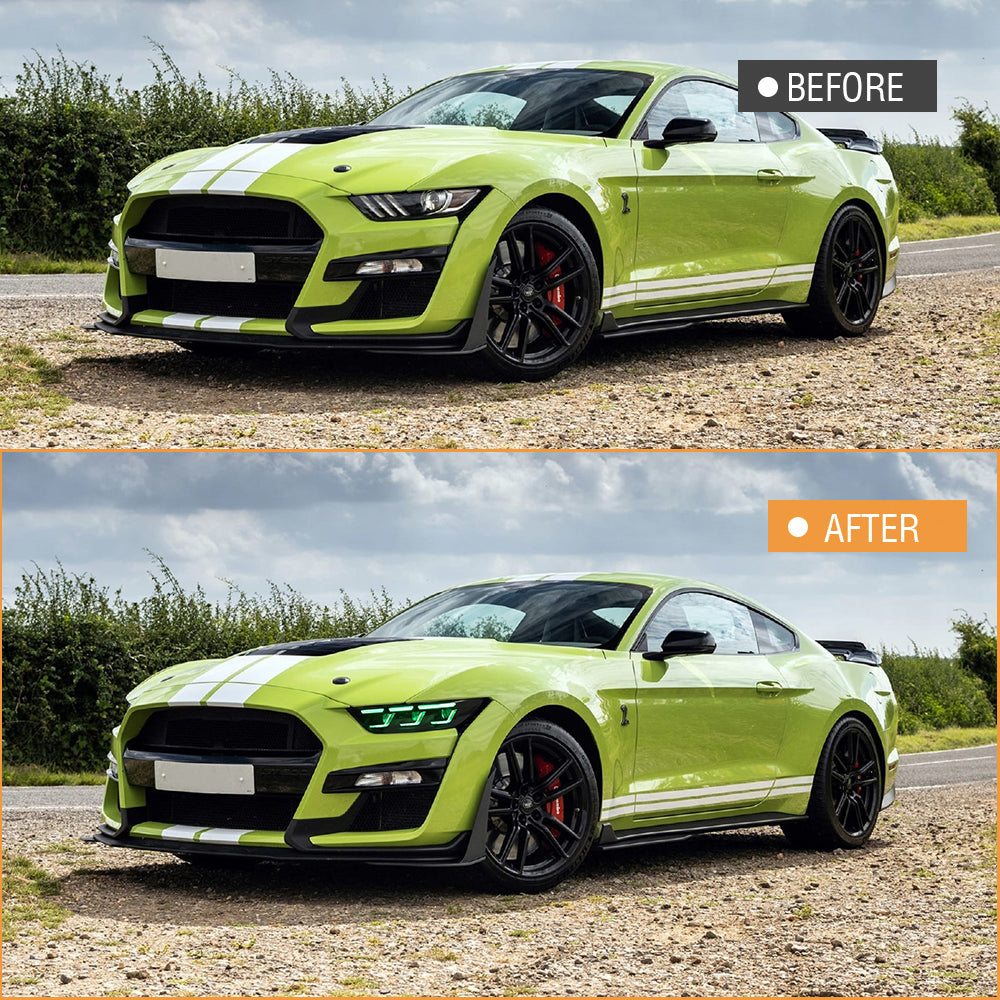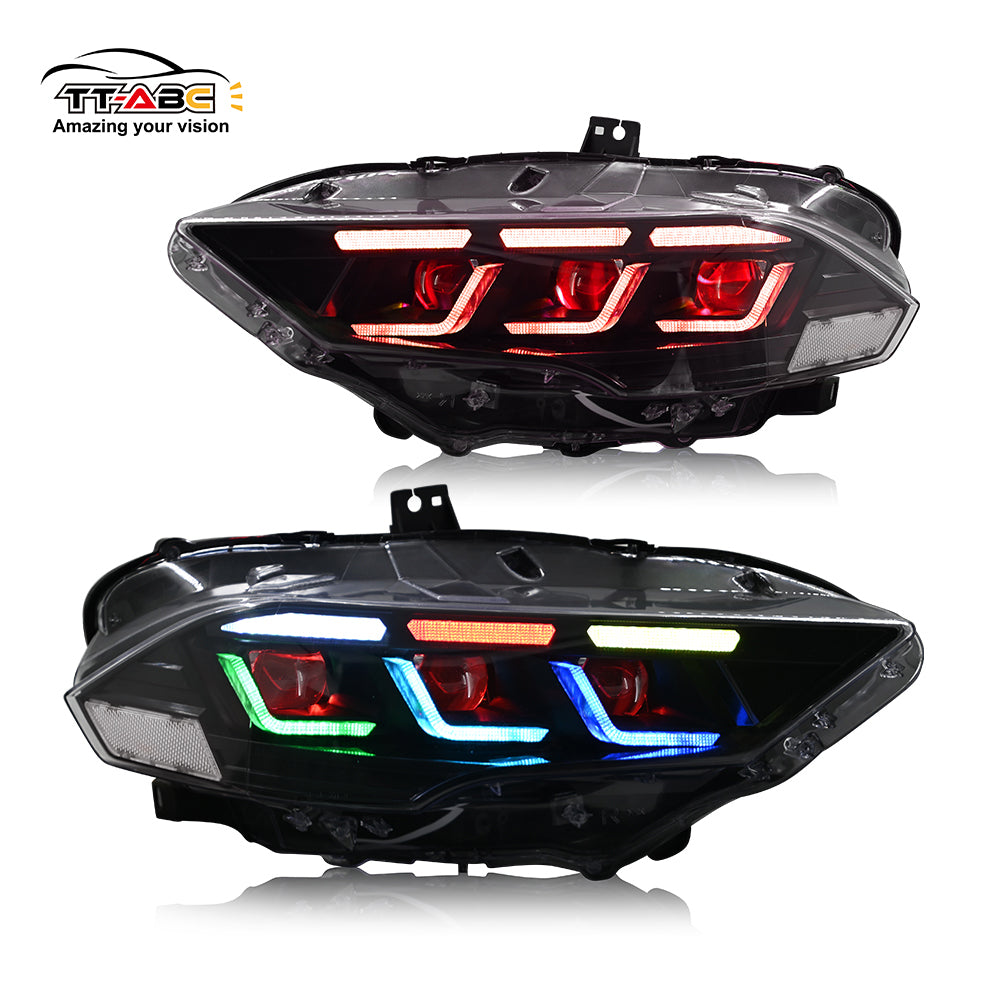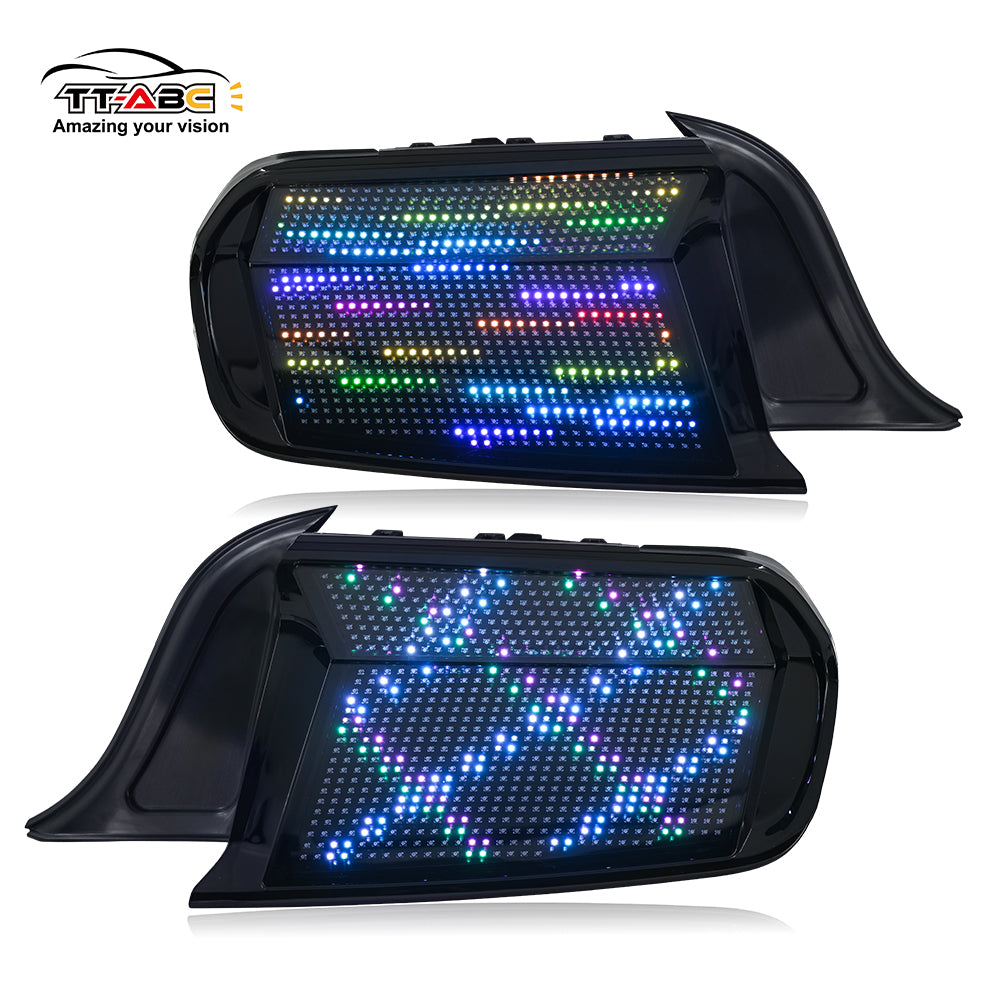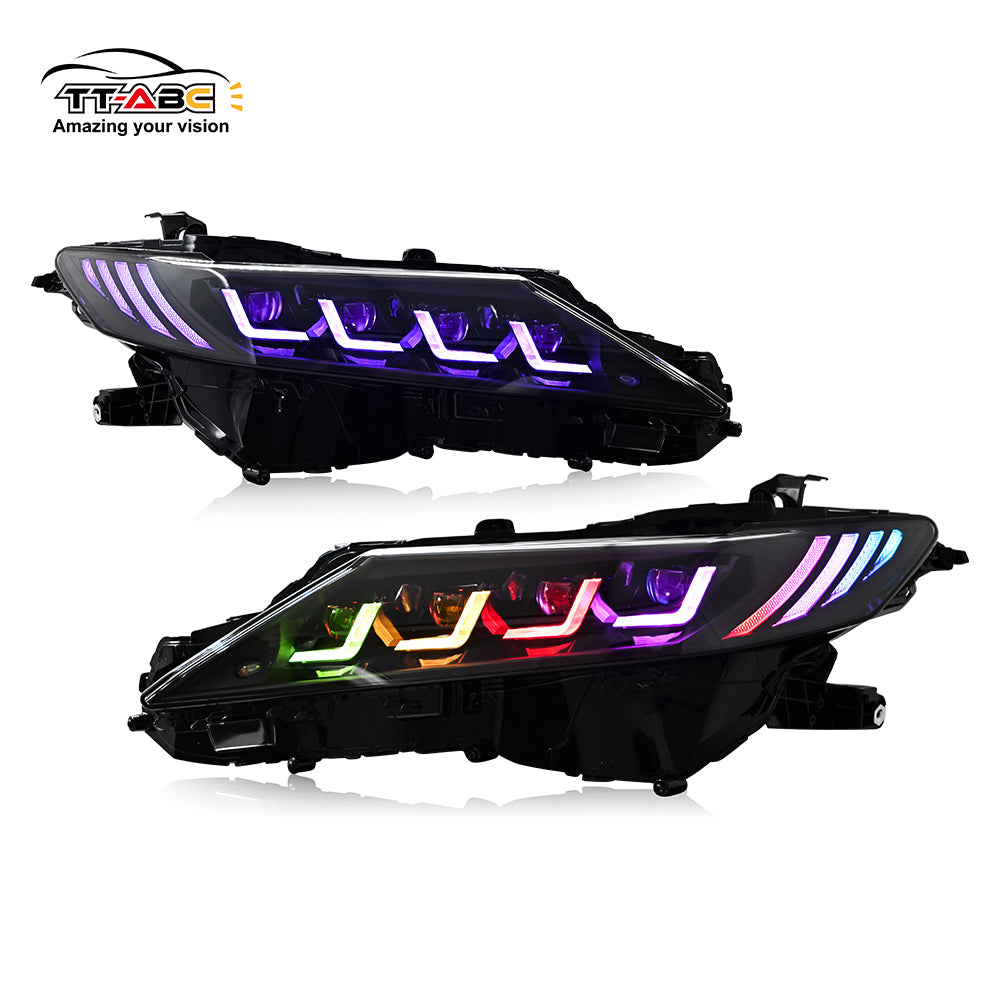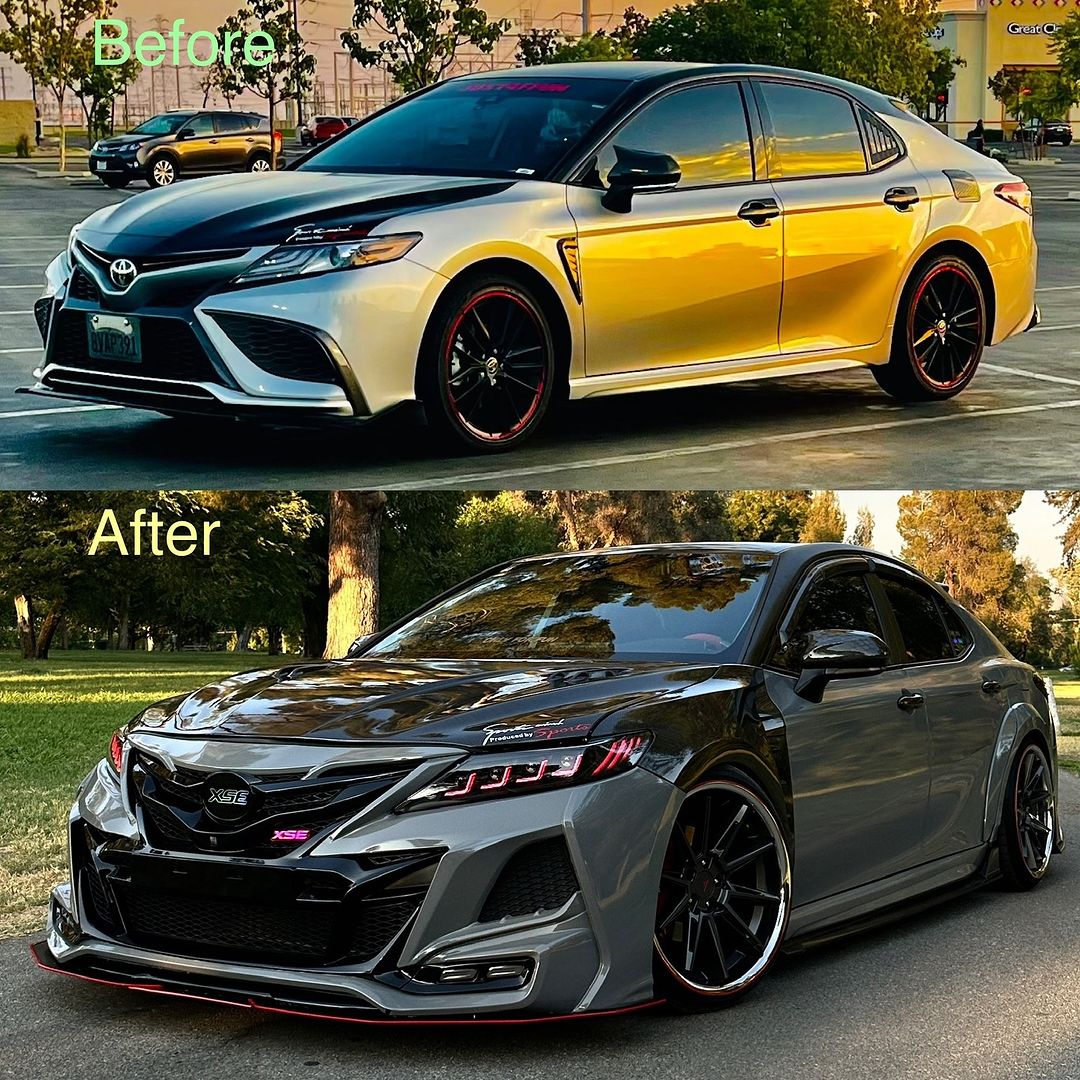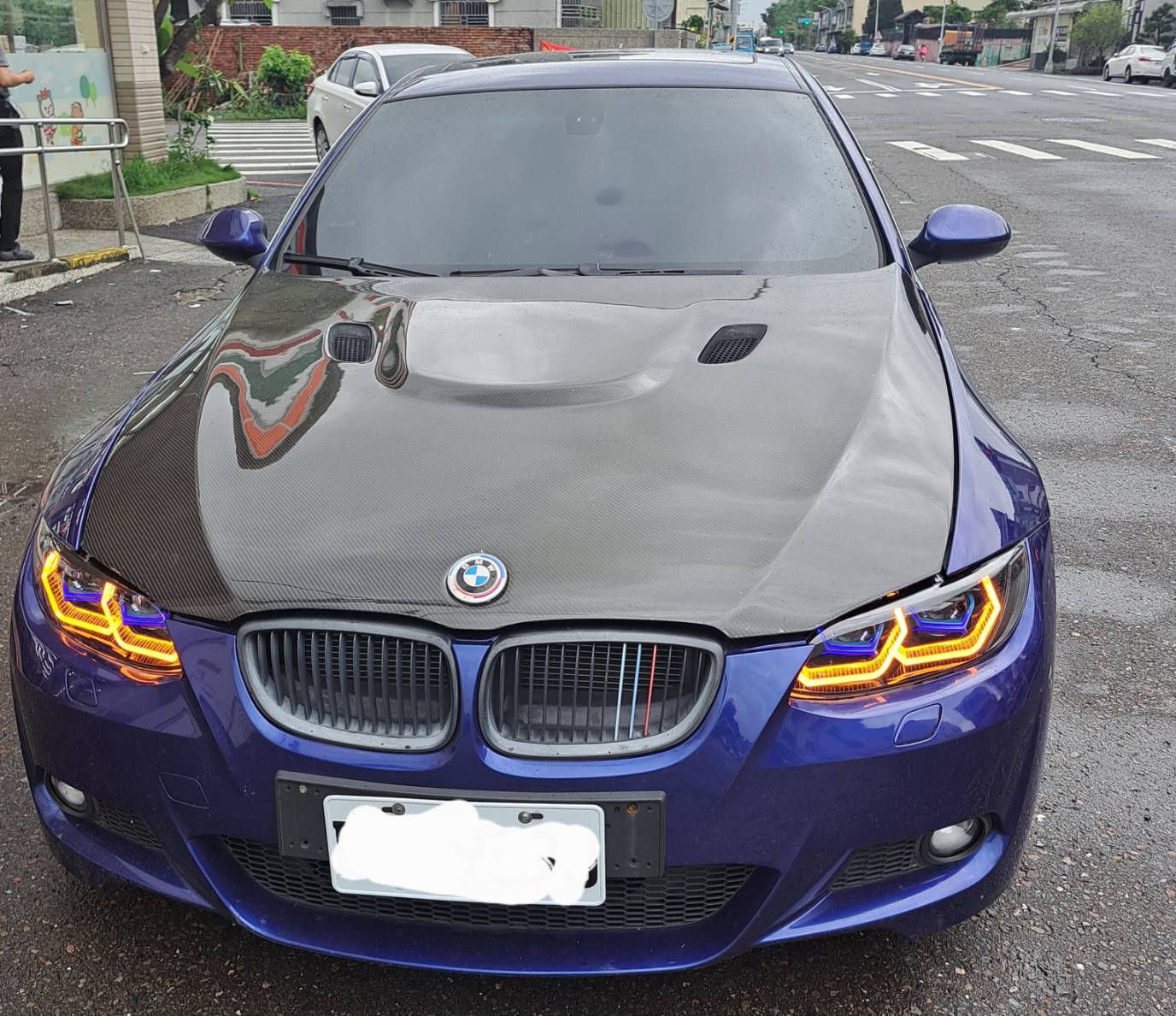من خلال تصميم وتحسين مصابيح مصدر الضوء LED، يمكن تحقيق نظام إضاءة سيارات أكثر أمانًا وكفاءة وصديقًا للبيئة. تشرح هذه المقالة مزايا مصابيح مصدر الضوء LED للسيارات مقارنة بالمصابيح التقليدية ومبادئ تصميم مصابيح مصدر الضوء LED للسيارات، وتسرد الاحتياطات اللازمة لتصميم مصابيح مصدر الضوء LED للسيارات، وتقترح استراتيجية تحسين لتصميم مصابيح مصدر الضوء LED للسيارات. يهدف تصميم وتحسين مصابيح السيارات بناءً على مصادر ضوء LED المقدمة في هذه المقالة إلى توفير مرجع لمصنعي السيارات وموظفي البحث والتطوير.

مع التقدم المستمر للعلوم والتكنولوجيا وتطور المجتمع، أصبحت السيارات وسيلة نقل لا غنى عنها في حياة الناس. وباعتبارها أحد المكونات المهمة للسيارات، يلعب تصميم المصابيح الأمامية وتحسينها دورًا حيويًا في سلامة القيادة وراحتها. في السنوات الأخيرة، حلت المصابيح الأمامية للسيارات التي تعتمد على مصادر ضوء LED تدريجيًا محل المصابيح الأمامية الهالوجينية التقليدية ومصابيح زينون وأصبحت اتجاهًا سائدًا. سيعمل التصميم والتحسين على تعزيز صناعة السيارات نحو الذكاء والتنمية المستدامة، مما يوفر للسائقين تجربة قيادة أفضل وسلامة على الطرق. لذلك، يستكشف هذا المقال القضايا ذات الصلة بتصميم المصابيح الأمامية للسيارات وتحسينها بناءً على مصادر ضوء LED.

مزايا تصميم المصابيح الأمامية لمصدر الضوء LED للسيارات
توفير الطاقة وحماية البيئة
تتمتع مصادر ضوء LED باستهلاك طاقة أعلى واستهلاك أقل للطاقة من مصابيح الهالوجين التقليدية ومصابيح زينون، وهي واحدة من أهم ميزاتها. تولد حبات مصباح LED الضوء في رقائق أشباه الموصلات من خلال التيار الكهربائي، بينما تنبعث المصابيح غير التقليدية الضوء عن طريق تسخين الأسلاك المعدنية. تصل كفاءة تحويل الطاقة لمصادر ضوء LED إلى أكثر من 80٪، وهو أعلى بكثير من 20٪ من المصابيح الأمامية التقليدية. وهذا يعني أنه تحت نفس السطوع، تستهلك مصابيح مصدر ضوء LED طاقة أقل بكثير، وبالتالي تقليل استهلاك الطاقة للسيارة، وتقليل العبء على البيئة، وتلبية متطلبات التنمية المستدامة.
حياة طويلة
إن عمر مصابيح LED للسيارات يتجاوز بكثير عمر المصابيح التقليدية، حيث يمكن أن يصل إلى عشرات الآلاف من الساعات أو حتى أطول. وبشكل عام، فإن عمر مصابيح LED يزيد عن 20000 ساعة، وحتى المنتجات عالية الجودة يمكن أن تصل إلى أكثر من 50000 ساعة. وعلى النقيض من ذلك، فإن عمر المصابيح التقليدية عادة ما يكون بضعة آلاف من الساعات فقط. وهذا يعني أن استخدام مصابيح LED يمكن أن يطيل بشكل كبير عمر خدمة نظام الإضاءة، ويقلل من تكرار الإصلاحات والاستبدالات، ويقلل من تكاليف الصيانة، وبالتالي تحسين موثوقية واستقرار المصابيح.
الألوان الغنية
يمكن لمصادر ضوء LED تحقيق مجموعة متنوعة من شاشات الألوان من خلال ضبط التيار والتصميم البصري، مما يساعد على تحسين الرؤية وضمان السلامة على الطرق. غالبًا ما توفر المصابيح الأمامية التقليدية لونًا واحدًا فقط (عادةً أصفر أو أبيض)، بينما يمكن أن تقدم مصابيح مصدر ضوء LED درجات حرارة ألوان وتأثيرات ألوان مختلفة حسب الحاجة. من خلال ضبط التيار واستخدام مواد وتصميمات بصرية محددة، يمكن لمصادر ضوء LED تقديم طيف أقرب إلى الضوء الطبيعي، وهو أمر مهم جدًا للسائقين. يمكن أن توفر درجات حرارة الألوان والألوان المختلفة التعرف على الطريق بشكل أفضل والراحة البصرية، وبالتالي تحسين شعور السائق بالأمان وتجربة القيادة.

يتميز تصميم مصابيح مصدر الضوء LED للسيارات بمزايا توفير الطاقة وحماية البيئة والعمر الطويل والألوان الغنية. مع التطور المستمر للتكنولوجيا، ستصبح مصابيح مصدر الضوء LED الاتجاه السائد لصناعة السيارات في المستقبل، مما يوفر للناس تجربة قيادة أكثر أمانًا وصديقة للبيئة. في الوقت نفسه، يجب أيضًا أخذ تصميم وجودة تصنيع مصابيح مصدر الضوء LED على محمل الجد لضمان استقرار أدائها وموثوقيتها لتلبية احتياجات السلامة على الطرق.
مبادئ تصميم مصدر ضوء LED للسيارات
تتضمن مبادئ تصميم مصدر ضوء LED للسيارات متطلبات السطوع ومتطلبات درجة حرارة اللون ومتطلبات إعادة إنتاج اللون. من خلال التصميم المعقول والتحسين، يمكن تحقيق سطوع عالي ودرجة حرارة لون مناسبة وإعادة إنتاج ألوان دقيقة، مما يوفر تأثيرات إضاءة ورؤية جيدة، ويعزز شعور السائق بالأمان وراحة القيادة. ستساعد هذه المبادئ في ضمان أداء مصابيح مصدر ضوء LED للسيارات بشكل جيد في بيئات الطرق المختلفة وظروف القيادة. أفضل تأثير.

متطلبات السطوع
سطوع المصابيح الأمامية هو مؤشر مهم لضمان سلامة القيادة الليلية. وفقًا لقواعد المرور والقوانين واللوائح ذات الصلة، يجب أن يفي سطوع المصابيح الأمامية بمتطلبات معينة. بشكل عام، يجب أن يكون سطوع الشعاع العالي مرتفعًا نسبيًا، بحيث يوفر تأثيرات إضاءة ساطعة بدرجة كافية في الليل أو في ظل ظروف الطريق المعقدة، مما يضمن أن يتمكن السائقون من رؤية الطريق أمامهم والعقبات والمركبات الأخرى بوضوح [6]. إن سطوع الشعاع المنخفض منخفض نسبيًا، ويُستخدم بشكل أساسي لتجنب الوهج المفرط للمركبات والمشاة القادمين، ولتوفير نطاق إضاءة مناسب.
متطلبات درجة حرارة اللون
درجة حرارة اللون هي معلمة تصف خصائص اللون لمصدر الضوء، وعادة ما تكون بوحدات "كلفن (ك)". تؤثر درجات حرارة اللون المختلفة على إدراك وتأثيرات العين البشرية البصرية. في تصميم المصابيح الأمامية لمصدر ضوء LED للسيارات، يجب ألا تلبي متطلبات درجة حرارة اللون احتياجات العين البشرية لبيئة الطريق فحسب، بل يجب أن تمتثل أيضًا للمعايير التنظيمية ذات الصلة. بشكل عام، تقدم درجات حرارة اللون المنخفضة (حوالي 3000 ~ 4000 كلفن) لونًا أكثر دفئًا. الضوء الأصفر أقرب إلى لون الضوء الطبيعي ومصابيح الهالوجين التقليدية. يمكن أن توفر درجة حرارة اللون هذه تباينًا وراحة أفضل، مما يجعل التفاصيل أسهل في التعرف عليها، وهي مناسبة للطرق الحضرية وبيئات القيادة. تقدم درجات حرارة اللون الأعلى (حوالي 5000 ~ 6000 كلفن أو أعلى) ضوءًا أبيض باردًا، وهو أقرب إلى لون الضوء الأبيض الطبيعي أو ضوء النهار. تتميز درجة حرارة اللون هذه بالقدرة على توفير سطوع أعلى وتعرف أعلى، وهي مناسبة بشكل خاص للاستخدام في أقسام الحركة عالية السرعة لمسافات طويلة مثل الطرق السريعة.

متطلبات إعادة إنتاج الألوان
تتطلب مصابيح مصدر ضوء LED للسيارات إعادة إنتاج ألوان عالية. يشير إعادة إنتاج الألوان إلى دقة اللون المعروض بواسطة الجسم المضاء مقارنة بلونه تحت الضوء الطبيعي. في القيادة على الطرق، يعد التمييز الدقيق للألوان مهمًا جدًا لتعرف السائق على الطريق وسلامته. لذلك، يحتاج تصميم مصابيح مصدر ضوء LED للسيارات إلى استعادة اللون الحقيقي للجسم قدر الإمكان لضمان قدرة السائق على تحديد المشاة وعلامات المرور والعقبات أمامه بدقة. من أجل تلبية متطلبات إعادة إنتاج الألوان، يحتاج تصميم مصادر ضوء LED للسيارات إلى النظر بشكل شامل في الخصائص المضيئة لرقائق LED وتصميم أغطية العاكس وتحسين الأنظمة البصرية. من خلال التحكم البصري الدقيق واختيار المواد المحسن، يمكن تحقيق أداء ألوان أكثر دقة وطبيعية، وتحسين التعرف على الطريق وسلامة القيادة للسائقين.
احتياطات تصميم مصابيح مصدر الضوء LED للسيارات
عند تصميم مصابيح مصدر ضوء LED للسيارات، يجب الانتباه إلى تبديد الحرارة وتصميم الدائرة والتصميم البصري. من خلال تصميم نظام تبديد الحرارة المعقول وتصميم محرك الدائرة، يمكن ضمان التشغيل المستقر وعمر مصابيح LED. في الوقت نفسه، من خلال التصميم البصري الدقيق، وتحسين شكل المصباح، وتصميم غطاء العاكس وتأثير التركيز وعوامل أخرى، يمكن تحقيق تأثيرات الإضاءة الجيدة والرؤية. يمكن أن يؤدي الاهتمام بهذه الاحتياطات إلى تحسين أداء وموثوقية مصابيح مصدر ضوء LED للسيارات، وتحسين سلامة القيادة وراحة السائقين.
مشاكل تبديد الحرارة
تولد مصادر ضوء LED الحرارة عند العمل، وقد تتسبب درجات الحرارة المرتفعة في إضعاف أداء LED، وقد يتدهور مصدر ضوء LED أو حتى يتلف. لذلك، يجب مراعاة نظام تبديد الحرارة المناسب أثناء عملية التصميم لضمان التشغيل المستقر وعمر LED. أثناء التصميم، يمكن استخدام مشعات الحرارة أو قواعد تبديد الحرارة أو المراوح لتبديد الحرارة لتحسين كفاءة التوصيل الحراري وتبديد الحرارة؛ كما يمكن تحسين تأثير تبديد الحرارة من خلال تحسين تخطيط لوحة PCB واختيار المواد الموصلة للحرارة.
تصميم الدوائر
يجب أن تلبي دائرة تشغيل مصدر ضوء LED متطلبات إمداد الطاقة المستقر والحماية من التيار الزائد لضمان التشغيل الطبيعي لمصباح LED. استخدم دائرة تشغيل مناسبة لضمان خرج تيار مستقر وتجنب تقلبات التيار التي تؤثر على سطوع وعمر مصباح LED. في الوقت نفسه، يجب أيضًا مراعاة خصائص مقاومة الماء والغبار والصدمات للتكيف مع بيئات الطرق المعقدة المختلفة.
التصميم البصري
التصميم البصري هو جزء مهم من تصميم المصابيح الأمامية لمصدر ضوء LED للسيارات. إنه مرتبط بشكل مباشر بتأثير الإضاءة والرؤية. من الضروري مراعاة عوامل مثل شكل المصباح وتصميم العاكس وتأثير التركيز. يجب أن يتوافق تصميم شكل المصباح مع متطلبات مظهر المصباح الأمامي، ويضمن إمكانية انبعاث الضوء وتوزيعه بشكل فعال لتوفير تأثيرات إضاءة جيدة. يحتاج تصميم العاكس إلى تحسين انعكاس وتوزيع الضوء لتحقيق أفضل تأثير إضاءة وتوحيد. بالنسبة لسيناريوهات التطبيق المحددة، مثل الشعاع العالي والشعاع المنخفض وإشارة الانعطاف، يلزم أيضًا تصميم تأثير التركيز المقابل لتحسين الرؤية والسلامة.
استراتيجية التحسين لتصميم المصابيح الأمامية لمصدر الضوء LED للسيارات
زيادة السطوع
لقد مكنت التحسينات في التصميم البصري والتقدم التكنولوجي المصابيح الأمامية LED الحديثة من توفير تأثيرات إضاءة أكثر قوة ووضوحًا، مما يوفر للسائقين تجربة بصرية أفضل. وفي الوقت نفسه، تساعد استراتيجيات التحسين التالية في تحسين كفاءة الطاقة وموثوقية مصابيح LED.
(1) استخدام رقائق LED عالية السطوع: اختر رقائق LED ذات الكفاءة الضوئية العالية وإخراج السطوع لضمان قدرة المصابيح الأمامية على توفير تأثيرات إضاءة أقوى. حققت تقنية LED الحديثة كفاءة إضاءة عالية، مما يسمح باستخدام مصادر ضوء LED بطاقة منخفضة نسبيًا. إنتاج ضوء أكثر سطوعًا.
(2) تحسين التصميم البصري: من خلال تحسين شكل وبنية واختيار مادة العاكس والعدسة، يمكن ضمان تركيز الضوء على المنطقة التي تحتاج إلى الإضاءة إلى أقصى حد. يمكن للعاكسات والعدسات المصممة جيدًا تحسين تركيز وتأثير إسقاط الضوء، وبالتالي تعزيز سطوع ورؤية المصابيح الأمامية.
(3) تحسين كفاءة إخراج الضوء: من خلال تحسين النظام البصري، يتم تقليل فقدان الضوء وتشتته أثناء النقل، وزيادة كفاءة إخراج الضوء. ويشمل ذلك تقليل امتصاص وانعكاسية المادة، وتحسين خصائص نفاذية وانتشار الضوء، وتقليل تداخل الضوء مع عوامل مثل الانعكاسات الضالة.
(4) مراعاة تبديد الحرارة: أثناء تحسين السطوع، يجب أيضًا الانتباه إلى تبديد حرارة المصابيح الأمامية. سيؤدي السطوع الأعلى إلى توليد المزيد من الحرارة، وقد يؤثر تبديد الحرارة الضعيف على عمر واستقرار LED. لذلك، أثناء عملية التصميم، يجب مراعاة تحسين نظام تبديد الحرارة، ويجب استخدام مواد ذات موصلية حرارية عالية وهياكل تبديد الحرارة لضمان أن السيارة يمكن للمصباح العمل بشكل مستمر ومستقر.
تقليل استهلاك الطاقة
(1) تحسين تصميم الدائرة: من خلال تحسين تصميم الدائرة، يمكن تقليل استهلاك الطاقة. يمكن أن يؤدي تبني تقنيات إدارة الطاقة الأكثر كفاءة، مثل تبديل إمدادات الطاقة والمحولات، إلى تحسين كفاءة تحويل الطاقة وتقليل فقد الطاقة. بالإضافة إلى ذلك، فإن اختيار مكونات الطاقة المناسبة وأجهزة تنظيم التيار، فضلاً عن تحسين التوصيلات الكهربائية والأسلاك، يمكن أن يقلل أيضًا من استهلاك الطاقة بشكل فعال.
(2) تحسين تنظيم التيار والتحكم في الطاقة: يرتبط سطوع مصادر ضوء LED بحجم التيار، لذا فإن تحسين تنظيم التيار والتحكم في الطاقة أمر بالغ الأهمية لتوفير الطاقة. باستخدام دوائر القيادة الذكية والتحكم في ردود الفعل الحالية، يمكن تعديل التيار ديناميكيًا وفقًا للاحتياجات الفعلية لضمان تشغيل LED بالمعلمات المثلى أثناء التشغيل وتجنب إهدار الطاقة الناجم عن التيار الزائد أو غير الكافي.
(3) استخدام أنظمة التحكم الذكية: يمكن أن يؤدي تقديم أنظمة التحكم الذكية إلى إدارة سطوع وقوة مصادر ضوء LED بشكل أفضل. من خلال أجهزة استشعار البيئة وأجهزة استشعار الضوء والأجهزة الأخرى، يمكنك مراقبة سطوع ومتطلبات البيئة المحيطة في الوقت الفعلي، وضبط سطوع وقوة خرج المصابيح الأمامية وفقًا لذلك لتحقيق أفضل تأثير لتوفير الطاقة. على سبيل المثال، عندما يكون هناك ضوء كافٍ، قلل من السطوع لتقليل استهلاك الطاقة.
(4) النظر بشكل شامل في كفاءة الطاقة لنظام المصابيح الأمامية: عند تقليل استهلاك الطاقة، من الضروري النظر بشكل شامل في كفاءة الطاقة لنظام المصابيح الأمامية بالكامل. بالإضافة إلى رقائق LED ودوائر التشغيل، يجب أيضًا الانتباه إلى كفاءة الطاقة للمكونات الأخرى، مثل أنظمة تبديد الحرارة وتصميم العدسات. من خلال اعتماد مواد عالية الكفاءة، وتحسين التصميم الهيكلي، وتقليل خسائر الطاقة، يمكن تحسين كفاءة الطاقة بشكل أكبر ويمكن تقليل استهلاك الطاقة.
تحسين تأثير تبديد الحرارة
(1) اختيار المواد ذات الموصلية الحرارية العالية: عند تصميم المصابيح الأمامية LED، يجب اختيار المواد ذات الموصلية الحرارية الجيدة. على سبيل المثال، المواد المصنوعة من السبائك، والمواد القائمة على النحاس، والركائز الخزفية، تتمتع هذه المواد بموصلية حرارية عالية ويمكنها نقل الحرارة الناتجة عن مصابيح LED إلى نظام تبديد الحرارة بشكل أسرع.
(2) توفير هيكل تبديد الحرارة ومساحة السطح المناسبة: من خلال التحسين، يمكن تحسين التصميم الهيكلي لنظام تبديد الحرارة وزيادة مساحة سطح تبديد الحرارة لتحسين كفاءة تبديد الحرارة. على سبيل المثال، يتم وضع مشتت حراري حول وحدة LED لزيادة مساحة السطح من أجل تبديد حرارة أفضل.
(3) الترتيب المعقول لأجهزة تبديد الحرارة: استخدم أجهزة تبديد الحرارة المناسبة، مثل مشعات الحرارة أو المراوح أو أنابيب الحرارة، للمساعدة في توصيل الحرارة وتبديدها بسرعة. يمكن للمراوح زيادة تدفق الهواء على سطح تبديد الحرارة وتحسين تأثير تبديد الحرارة؛ بينما يمكن لأنابيب الحرارة نقل الحرارة بشكل فعال من مصدر الحرارة إلى منطقة تبديد الحرارة.
(4) مستشعر درجة الحرارة ونظام التحكم الذكي: قم بتثبيت مستشعر درجة الحرارة لمراقبة درجة حرارة مصدر ضوء LED وتوصيله بنظام التحكم الذكي. عندما ترتفع درجة الحرارة، يمكن لنظام التحكم الذكي ضبط سطوع أو طاقة LED وفقًا لنطاق درجة الحرارة المحدد مسبقًا للحفاظ عليه ضمن نطاق درجة حرارة التشغيل المقبول. يمكن أن يتحكم هذا بشكل فعال في درجة حرارة مصدر ضوء LED لتجنب ارتفاع درجة الحرارة الذي يؤثر على عمره واستقراره.

تحسين التأثير البصري
(1) تطبيق برامج وتقنيات التصميم البصري المتقدمة: استخدم برامج وتقنيات التصميم البصري الحديثة لإجراء محاكاة بصرية دقيقة وتحليل محاكاة على المصابيح الأمامية. من خلال الحساب العددي والخوارزميات البصرية، يمكن تحسين توزيع الضوء وخصائص التركيز ووظيفة مقاومة الوهج للمصابيح الأمامية لتحقيق تأثير إضاءة ورؤية أفضل.
(2) تحسين شكل غطاء المصباح وتصميم العاكس: غطاء المصباح والعاكس من الأجزاء المهمة التي تؤثر على تأثير إسقاط الضوء. من خلال تحسين شكل غطاء المصباح وتحسين نسيج السطح وتصميم السطح المنحني للعاكس، يمكن تحقيق توزيع موحد وإسقاط دقيق للضوء. يمكن لتصميم غطاء المصباح والعاكس المعقول التحكم في اتجاه وخصائص تشتت الضوء، وتحسين تأثير الإضاءة وتجنب الوهج.
(3) اختيار العدسات وتحسينها: يؤثر اختيار العدسات وتحسينها بشكل كبير على الأداء البصري للمصابيح الأمامية. يمكن أن يؤدي استخدام بنية العدسات والمواد المناسبة إلى تحسين تأثير انكسار الضوء وتركيزه. من خلال تحسين شكل السطح المنحني ومؤشر الانكسار ونفاذية العدسة، يمكن تركيز الضوء بشكل أكثر دقة. تحسين تأثيرات الإضاءة والرؤية في المناطق المستهدفة.
(4) تقليل فقدان الضوء وتسربه: من خلال استخدام الطلاءات العاكسة والأفلام المضادة للانعكاس والمعالجات المضادة للتوهج، يمكن تقليل فقدان الضوء وتسربه. من خلال تحسين عملية الانعكاس والانكسار لمسارات انتقال الضوء المحددة، يمكن تركيز الضوء وإضاءته بشكل أفضل في المنطقة التي تحتاج إلى الإضاءة، مما يساعد على تحسين تأثيرات الإضاءة وتقليل استهلاك الطاقة وتقليل تلوث الضوء بالبيئة المحيطة.
الآفاق المستقبلية لتصميم مصدر ضوء LED للسيارات
الإضاءة الذكية والمتكيّفة
مع التقدم المستمر للذكاء الاصطناعي وتكنولوجيا الاستشعار، ستحقق مصابيح مصدر الضوء LED للسيارات في المستقبل مستوى أعلى من الذكاء والوظائف التكيفية. يمكن لمصادر الضوء LED ضبط أوضاع الإضاءة والسطوع وزوايا الشعاع تلقائيًا من خلال استشعار المعلومات حول البيئة المحيطة وظروف القيادة لتوفير أفضل تأثير إضاءة. على سبيل المثال، عند القيادة ليلاً، يمكن للأضواء التبديل تلقائيًا إلى شعاع عالي وضبط المسافة وسرعة السيارة التي أمامك تلقائيًا. ضبط نطاق شعاع الضوء تلقائيًا.
شاشة عالية الدقة ومتعددة الوظائف
قد تدمج مصابيح LED للسيارات في المستقبل وظائف العرض عالية الدقة لعرض معلومات الملاحة وحالة السيارة وغيرها من معلومات القيادة العملية. يمكن لمصفوفة النقاط LED أو البكسلات الموجودة على المصابيح عرض الرموز والرسوم المتحركة والمؤثرات البصرية المختلفة بمعدل تحديث أسرع لتعزيز سلامة المرور وتجربة القيادة. يمكن أيضًا توصيل شاشة العرض متعددة الوظائف هذه بالمساعدين الأذكياء وأنظمة المركبات لتحقيق التحكم الصوتي والتفاعل الذكي.

تقنية الإضاءة بالليزر
كتكنولوجيا مصدر ضوء ناشئة، يتمتع الليزر بمزايا السطوع العالي والنقاء العالي والعمر الطويل، ويُعتبر من المرجح استخدامه في مصابيح مصدر ضوء LED للسيارات. يمكن أن توفر إضاءة الليزر مسافة إشعاع أطول وتحكمًا أكثر دقة في الشعاع، مما يحسن الرؤية وسلامة القيادة الليلية. بالإضافة إلى ذلك، يمكن دمج الليزر مع أجهزة استشعار الضوء لتحقيق إضاءة تكيفية أكثر دقة وضبط شكل وشدة الشعاع وفقًا لظروف الطريق.
شكل مرن وتصميم مخصص
سيولي تصميم مصابيح مصدر الضوء LED للسيارات في المستقبل المزيد من الاهتمام لشكل المصابيح واختيارها حسب الطلب. باستخدام تقنية LED المرنة، يمكن إنشاء أشكال مصابيح أكثر تنوعًا وتصميمات خطوط لتلبية احتياجات الموديلات والمستخدمين المختلفين. بالإضافة إلى ذلك، فإن استخدام تقنيات مثل درجة حرارة اللون المتغيرة والضوء القابل للتعتيم يسمح لأصحاب السيارات باختيار تأثيرات الإضاءة بحرية وفقًا لتفضيلاتهم أو احتياجاتهم، مما يضيف خيارات تخصيص مخصصة.
خصائص حماية البيئة وتوفير الطاقة
سيولي تصميم مصابيح مصدر ضوء LED للسيارات في المستقبل المزيد من الاهتمام لحماية البيئة وخصائص توفير الطاقة. تتميز تقنية LED نفسها بكفاءة عالية في استخدام الطاقة، وهي أكثر توفيرًا للطاقة من تقنية الإضاءة التقليدية وتلبي احتياجات التنمية المستدامة. في الوقت نفسه، من خلال تحسين تصميم الدائرة ونظام تبديد الحرارة، يمكن تقليل استهلاك الطاقة وفقدان طاقة الضوء، مما يحسن بشكل أكبر من كفاءة الطاقة وعمر مصادر ضوء LED للسيارات.

في المستقبل، سيكون تصميم مصابيح مصدر ضوء LED للسيارات أكثر ذكاءً وتعددًا في الوظائف وشخصيًا، مع الاستفادة الكاملة من تطوير الذكاء الاصطناعي وأجهزة الاستشعار وتكنولوجيا العرض. وفي الوقت نفسه، ستركز على حماية البيئة وخصائص توفير الطاقة، وتحسين كفاءة الطاقة والموثوقية. ستوفر هذه الابتكارات والتطورات للسائقين تجربة قيادة أكثر أمانًا وراحة وشخصية.
يعد تصميم وتحسين مصابيح السيارات التي تعتمد على مصادر ضوء LED اتجاهًا مهمًا للتطور المستقبلي لصناعة السيارات. تقدم هذه المقالة مزايا ومبادئ التصميم والاحتياطات الخاصة بمصابيح مصدر ضوء LED للسيارات، وتوفر استراتيجيات التحسين. مع التقدم المستمر لتكنولوجيا LED، يُعتقد أن مصابيح مصدر ضوء LED للسيارات ستحقق اختراقات أكبر في كفاءة الطاقة وحماية البيئة وأداء السلامة. في المستقبل، يمكننا أن نتوقع ظهور مصابيح LED أكثر ذكاءً وكفاءة في استخدام الطاقة وتوفير الطاقة، مما سيجلب المزيد من الراحة والرفاهية لحياة القيادة للناس.










